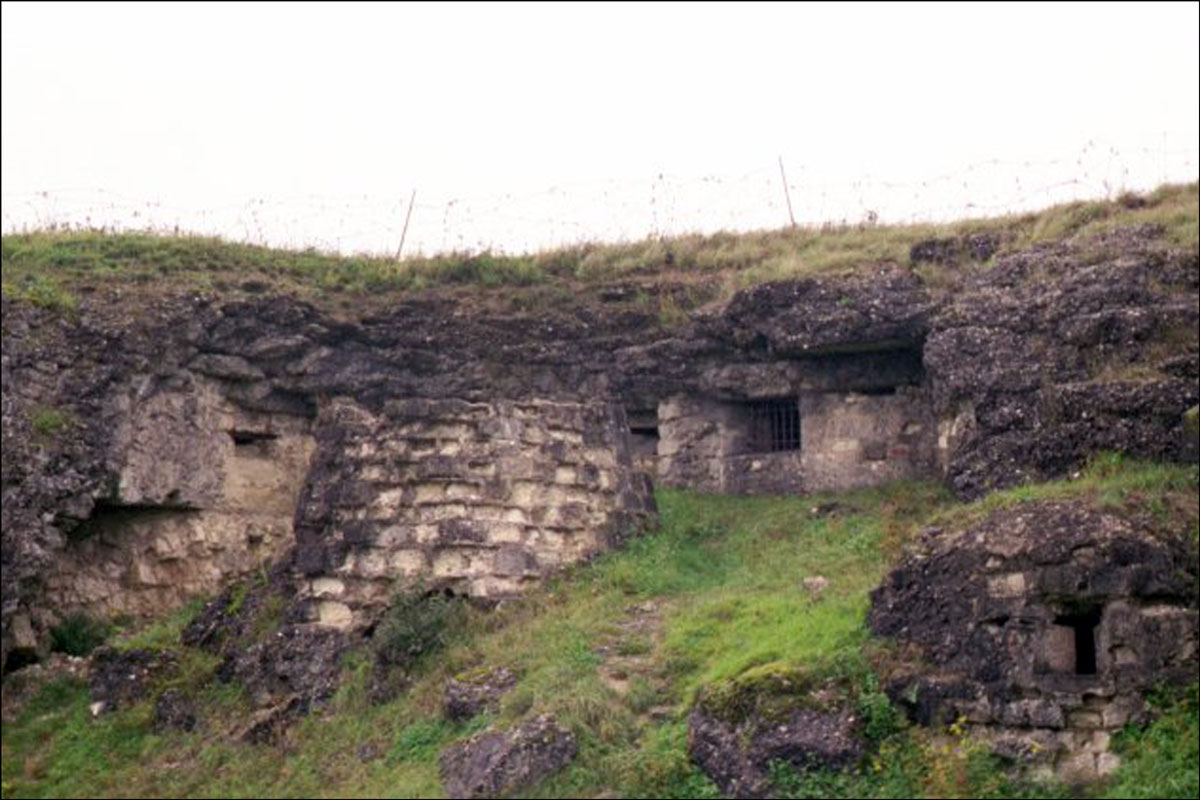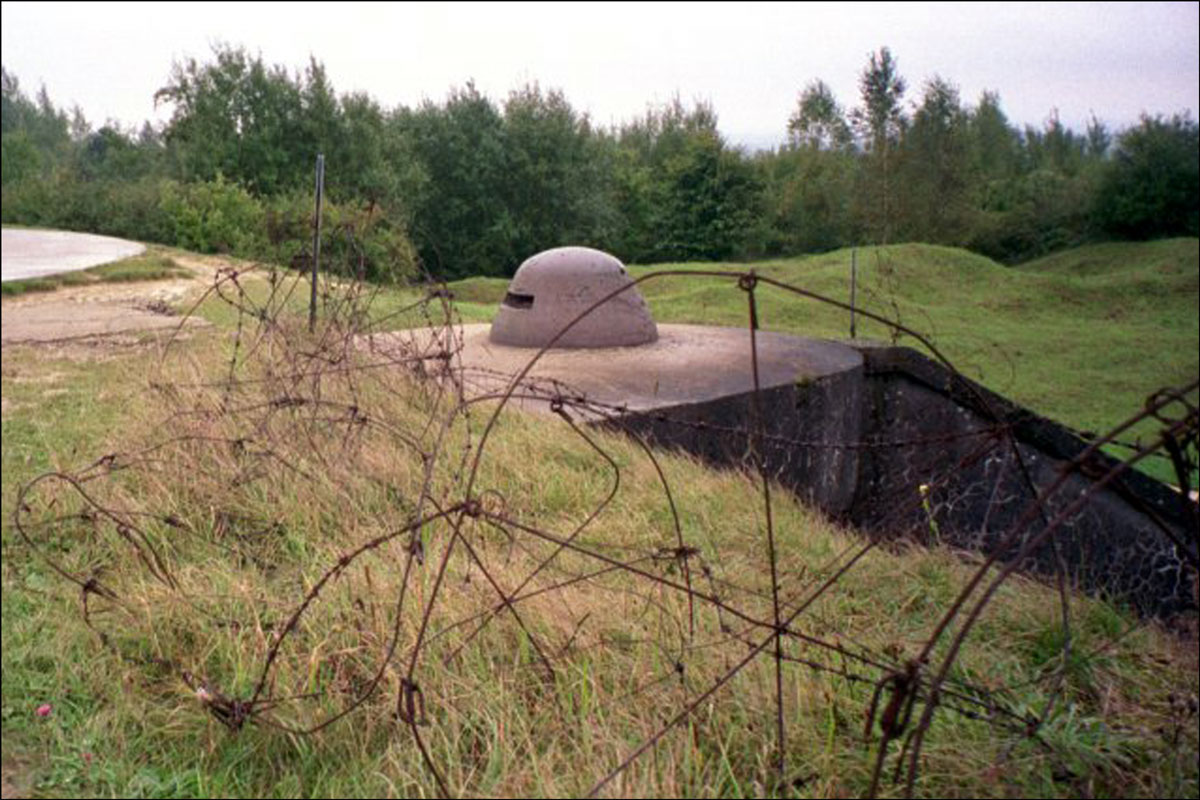John Jwanauski served in the U.S. Army in World War I . He was stationed in the Gérardmer Sector, Vosges, France and was deployed in the Meuse Argonne Offensive, the battle that led to Germany’s signing of the Armistice on November 11, 1918 . Today, November 11 is celebrated in the United States as Veteran’s Day and in Canada as Remembrance Day.
Several years ago I traveled to France and visited Verdun, site of one of the worst battles of World War I . Verdun is located not far from the location of the Meuse Argonne Offensive that ended the war with Germany . The treaty of Versailles was signed on June 28, 1919, and the final peace treaty with the Ottoman Empire (today known as the Republic of Turkey) was signed at Lausanne on July 24, 1923.
World War I Bunkers at Verdun
Photograph copyright 2001 by Lewis Michaels, used with permission
The trip was an adventure, not only because it was my first trip to France, but because I flew there shortly after the terrorist attacks on America . My flight to Paris was cancelled and I had to book a flight on another airline . While in Europe, SwissAir went bankrupt, and again my flight was cancelled . Then, the day before I was to return home, the United States invaded Afghanistan.
Bunkers and Barbed Wire at Verdun
Photograph copyright 2001 by Lewis Michaels, used with permission
I toured France with Lewis Michaels, a colleague from work . Lewis served as my tour guide and interpreter in France and arranged for us to visit Verdun . I was completely unprepared for what I saw there . The Battle of Verdun lasted from February 21, 1916 to December 1916 . During that time 26,000,000 bombs were dropped on the area, and at the end of the battle, 300,000 French and German soldiers were missing.
Steve in the Douaumont Cemetery
Photograph copyright 2001 by Lewis Michaels, used with permission
Much of the area is maintained as a memorial to the battle . Craters where the bombs fell are still in evidence . Unexploded shells are still found in the woods surrounding the area . The Douaumont Ossuary and Cemetery was constructed as the final resting place of those French and German soldiers killed in the battle, with the remains of those who could not be identified interred in the Ossuary.
The Douaumont Ossuary
Photograph copyright 2001 by Lewis Michaels, used with permission
Tomorrow: Searching for John Jwanauski in the Ellis Island Records







